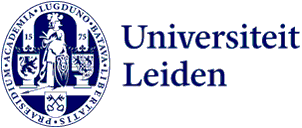
Debunking myths about the secret services
In her book ‘Diensten met geheimen’ (‘services with secrets’), Willemijn Aerdts uses true stories to cast light on the operating methods of the Dutch secret services, the AIVD and MIVD. And she also debunks a few myths.
Many of us have an image of the intelligence and security services that you see in movies and TV series. People running around with guns, and arrest teams storming into buildings and capturing criminals. But in reality it’s all much less spectacular, says Aerdts, an expert on intelligence and security services. ‘In the Netherlands, the services aren’t allowed to carry guns or arrest anyone. Before a case is taken to court, the Public Prosecution Service conducts its own investigation.’
‘If you want to monitor someone 24 hours a day, you need a team of 40 people.’
This is because the tasks of the Dutch police are strictly separated from those of the AIVD (General Intelligence and Security Service) and MIVD (Military Intelligence and Security Service); after the Second World War, no one ever wanted to see Gestapo-like practices again.
The spying activities shown in TV series are not really representative either. Aerdts: ‘Traditional espionage still goes on, but the services are increasingly becoming data organisations. They try to recruit the best hackers in the world.’
Monitored by the services
Another myth that Aerdts wants to debunk is that large numbers of people in the Netherlands are monitored. ‘Every year, some of my students in the Intelligence Studies minor say they’re afraid that they will be monitored because they attend our lectures and are always googling things. But the services just don’t have the capacity for that. If you want to monitor someone 24 hours a day, you need a team of forty people. And more importantly: the services really don’t want to monitor everybody.’
Unless a student belongs to a terrorist organisation or has dubious travel plans, the services usually aren’t interested in monitoring them. But when they do want to monitor people, they can seriously invade their privacy. And this is always a contentious issue. Aerdts: ‘Before the 1950s, the services were a bit secret. Officially, they didn’t exist and there were no laws to regulate them; these were only introduced later. But as far back as the 1950s, parliament had its concerns about privacy.’ By now, we have an extensive regulatory system in the Netherlands. ‘Precisely because it’s difficult for us, as citizens, to keep an eye on what those services are doing.’
The services are still shrouded in secrecy, because if they share information, they might reveal their operating methods.
Secrecy
The services are still shrouded in secrecy, because if they share information, they might reveal something about their operating methods or who is being monitored. But if it’s all so secretive, how was Aerdts able to write a whole book about the AIVD and MIVD? ‘Many historical examples have been made public and sometimes archives are released as well. And from time to time we see reports in the news. This is interesting, because if the services themselves disclose something, there’s usually a motive behind it; a recent case, for example, was the British and Americans who deliberately divulged information about the war in Ukraine. Apart from that, I also have my own network. I’ve been working in this field for ten years now, and I have my own contacts and sources who sometimes share things with me.’
The book Diensten met geheimen (‘services with secrets’) by Willemijn Aerdts will be presented on 25 May at the Spanish Steps in the Wijnhaven Building, The Hague.
Text: Dagmar Aarts
Photo: Rodney Graham, ‘the Newspaperman’, 2017 (coll. Museum Voorlinden)
